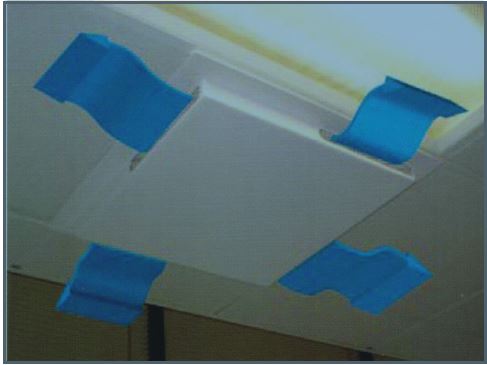The Ups and Downs of Ribbon Cutting: 7 Tips for Maximizing Productivity at the Microtome
There’s something satisfying about being on a roll… when you’re having one of those sessions where every turn of the microtome wheel yields sheer perfection. When you’re left basking in the beauty of the ribbons you’re creating.
Sadly, not every day can be filled with such utter perfection. In the histology lab, even the most experienced techs have a less-than-perfect day every now and then.
What does it take to crank out beautiful ribbons at the microtome… as close to every time as possible?
Sectioning Essentials
Sectioning starts long before you sit down at the microtome. Here are a few things that will help to ensure you cut the best sections possiblle.
1. Properly fixed, dehydrated, and embedded tissue blocks
Starting with a good quality block is a must if you want to cut a good quality ribbon. There are many fixatives and techniques used depending on the tissue and your lab’s protocol.
Problems can arise from over- or under-processing among other things. LabCE runs through some potential processing problems and their solutions here.
2. Neatly trimmed blocks
Removing excess paraffin from the cassettes is essential to making sure the chuck has a firm grip and the block doesn’t move during sectioning.
A trimmer like the Premiere® XH-90 will make the job neat and easy.
3. Cold tissue blocks
Paraffin blocks that are too warm won’t offer enough resistance to give a smooth, thin cut. They should be cold but not frozen, otherwise they can crack and/or the tissue may pull away from the wax.
Chill blocks on plain old ice before cutting. The moisture from the ice may also help to make it easier to cut the tissue.[1]
4. Sharp blade
Don’t take shortcuts by using an old blade… it’ll cost you in the long run. When you’re cutting something as thin as 4 micrometers, the only way to get it right is with a sharp blade. Replace it at the start of every session at the microtome.
PathSUPPLY offers several brands of disposable blades including Feather, Sturkey, DURAEDGE®, and ENCORE (by DURAEDGE®).
If you’re still using a reusable blade, make sure it’s sharp… sharpening frequency will depend on the amount and type of tissue blocks that have been cut. Some indications that your microtome knife may need to be sharpened (or cleaned):
- Sections are compressed or wrinkled
- Ribbon won’t form
- Sections are sticking to the knife
- Sections are lifting/pushing away from the knife on upstroke
- Sections are deformed or smeared
- Ribbon splits or sections show vertical scratches or lines[2]
5. Optimized knife angle
This is the angle at which the knife will cut smoothly without applying pressure to the block.
Finding the perfect angle can take some trial and error. Not too steep. Not too tight. Keep in mind that even if they’re theoretically the same, there are slight differences in blades from different manufacturers. The shape, coatings, and material are likely to vary a bit between manufacturers. This means the ideal angle for one brand may not work so well for another. Check out our “Microtome Blade Optimization” tool for some helpful tips on optimizing your knife angle.
6. A draft-free work area
A four-micrometer thick tissue section will float away like a dandelion petal in a summer breeze if given the opportunity. Drafts can come from a number of sources. Doors opening and closing, air conditioning or heating vents, fans, or even people passing by can create enough of a breeze to mess up that ribbon you just cut.
Hopefully, the microtome workstation in your lab is already situated out of the way of any potential drafts. Keep it out of high-traffic areas and away from doors that are likely to open and close during the workday.

If drafts from ceiling air vents are a potential problem, redirecting the airflow is a piece of cake with an easy-to-install air deflector like PerfectVENT. It diverts the air across the ceiling so that it doesn’t blow directly down, thereby eliminating drafts (and cold spots).
7. An ergonomically optimized workstation
Extended periods of time spent at the microtome can lead to unnecessary pain and injury. A workstation that’s been optimized ergonomically will help to reduce the risk.
Here are some best-practice tips for setting up your microtome in order to reduce strain and repetitive-motion injuries:
- Position the microtome as close to the user as possible to minimize leaning and reaching.
- Adjust the height of the microtome, bench, and chair so that the user’s wrist can be kept straight when turning the handwheel.
- Use the whole arm to turn the handwheel, keeping the arm close to the body rather than out to the side.
- Get up and stretch or switch tasks every 20 minutes or so.[3]
For more on overall lab ergonomics, check out this article on reducing workplace injuries.
Our full catalog of microtomy supplies can be found on our website.
Check out PathSUPPLY or call us at 800-631-3556 for your pathology and laboratory supply needs. PathSUPPLY… Helping those who help patients.
Have a great day… and we’d love to hear from you! Do you have any pro tips to add?
PS: May is Brain Cancer Awareness Month and Skin Cancer Awareness Month. We salute all those involved in the fight against these and all forms of cancer.
[1] Agar Scientific, A Slice (or Two) of Life: Cutting Good Sections
[2] Brain Research Laboratories, Use and Care of Your Microtome Knife
[3] Working Well, Laboratory Ergonomics
